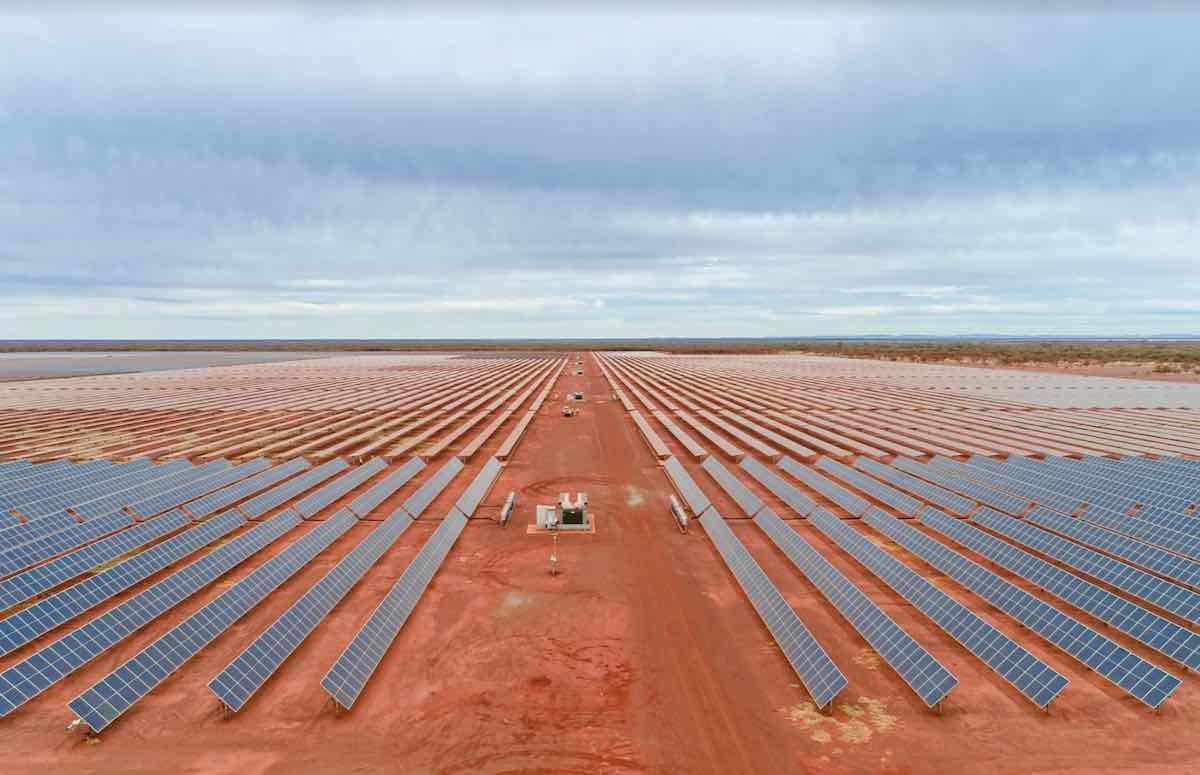Billionaire Andrew “Twiggy” Forrest’s Fortescue Metals Group says it will spend $A9.2 billion – most of it in the next four years – on its decarbonisation strategy that is targeting the complete decarbonisation of the company’s Scope 1 and 2 emissions by 2030.
The majority of Fortescue’s $A9.2 billion investment will be spent between 2024 and 2028 and will include the deployment of an additional 2-3GW of wind and solar generation and battery storage, as well as the incremental costs associated with transitioning its mining fleet and locomotives to green fuels.
“Twiggy” Forrest’s ambitions to decarbonise his own companies’ operations – not to mention spur the decarbonisation of the Australian industry sector – have not been quiet.
In mid-2020, Fortescue Metals announced what was then an industry leading emission reduction target of net zero operational emissions by 2040. Less than a year later, Forrest announced that his Fortescue Metals Group would increase its ambition to achieve carbon neutrality by 2030.
Forrest fleshed out the details of those plans on Tuesday at a conference in the US, saying it would require capital investment by 2030 of $US6.2 billion, or around $A9.2 billion.
In return, the investment will eliminate fossil fuel risk from across Fortescue Metals’ iron ore operations by 2030 and cut operating costs by $A1.2 billion per year, and a relatively quick payback by 2034.
“There’s no doubt that the energy landscape has changed dramatically over the past two years and this change has accelerated since Russia invaded Ukraine,” said Forrest, who made the announcement in New York at the United Nations Global Compact, in response to the invitation of US President Biden’s Firs Movers Coalition.
“We are already seeing direct benefits of the transition away from fossil fuels – we avoided 78m litres of diesel usage at our Chichester Hub in FY22 – but we must accelerate our transition to the post fossil fuel era, driving global scale industrial change as climate change continues to worsen.
“It will also protect our cost base, enhance our margins and set an example that a post fossil fuel era is good commercial, common sense.”:
Fortescue’s new decarbonisation target will be monitored by the Science Based Targets Initiative (SBTi) and will verify and audit the company’s emissions reduction.
The company says that – when fully implemented – the decarbonisation strategy will result in the avoidance of 3 million tonnes of CO2e emissions each year and net operating cost savings of $US818 million per year, around $A1.2 billion, with cumulative cost savings by 2030 of $A4.5 billion and payback of capital by 2034.
Forrest also hopes that his company’s decarbonisation plans will serve as impetus and an example for both the Australian government and other industry companies.
When asked in New York what he thought of the recent passing of the Albanese Labor government’s climate bill, Forrest explained that it was a “minimum, not a maximum, and there’s room for improvement.
“If companies like ours start to go 100 per cent green by 2030, then governments will be encouraged to adjust their policy settings,” Forrest added, according to The Sydney Morning Herald.
“We’re out there to demonstrate that you can run Australian industry without any pollution, without any fossil fuels. So let’s get on and do it.”











